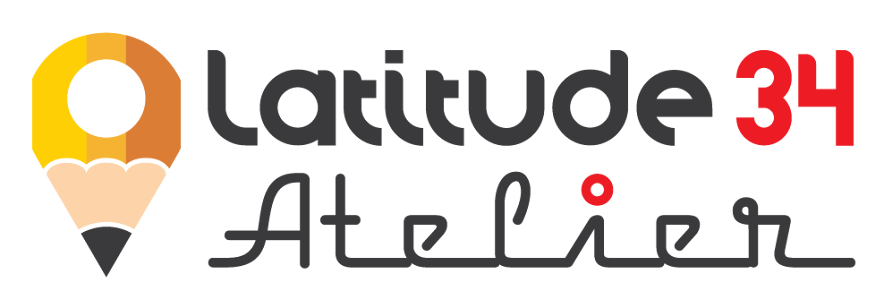The Art of Simplicity: How Typographic Logos Create More Impact for Businesses
In the bustling world of branding, companies face the challenge of creating a memorable and impactful logo that communicates their values and mission. A logo, in essence, is a visual summation of a brand’s identity and leaves a lasting imprint on consumers' minds. However, a recurring debate within design circles centers around the use of typographic versus iconographic logos. While both types have their merits, this article delves into why a typographic logo could offer a more influential presence for your company.
1. Clear Communication
In the quest for a unique visual identity, companies can sometimes overlook a fundamental purpose of a logo: straightforward communication. A typographic logo—also known as a "logotype"—is a design approach where the company’s name is the logo itself, like Google, Visa, or FedEx. This simplicity allows brands to present themselves with utmost clarity, eliminating potential misunderstandings that might arise from abstract iconography.
2. Instant Recognition
When consumers see a well-executed typographic logo, they instantaneously associate it with the brand's name. This instant recognition is a powerful tool for building brand awareness and facilitating customer recall. An iconic example of this is Coca-Cola, whose flowing script is immediately recognizable across the globe. Unlike iconographic logos, which might require additional context or design elements to fully communicate the brand's identity, typographic logos make an immediate impact.
3. Versatility and Adaptability
A typographic logo has inherent versatility. Typography-based logos can adapt to various platforms and mediums without losing their core visual integrity. The lack of additional visual elements or intricate designs simplifies resizing and formatting, making typographic logos more compatible across different marketing channels—whether it's a billboard, a business card, or a social media profile.
4. Built-in Brand Storytelling
Typography isn't just about letters—it's about emotion, tone, and personality. Each typeface carries its inherent mood and meaning. Serif fonts, for example, often evoke a sense of tradition and respectability, while sans-serif fonts can reflect modernity and minimalism. By choosing a typographic logo, brands have an opportunity to subtly convey their personality and values through their choice of typeface, color, and arrangement.
5. Enhanced Memorability
Because typographic logos essentially equate the brand's name with the logo, it can significantly enhance the brand's memorability. Consumers are more likely to remember the brand’s name as they directly interact with it every time they encounter the logo. In a marketplace filled with complex iconography, a typographic logo stands out for its simplicity and directness.
6. Longevity and Timelessness
Iconographic logos might necessitate redesign or modernization over time as design trends evolve or as the company expands its offerings. Conversely, typographic logos tend to have more staying power. Consider the enduring power of The New York Times logo, which has remained virtually unchanged since the 1850s. The timeless nature of typography allows companies to build a lasting legacy.
It’s worth noting that the decision between a typographic and an iconographic logo isn't a one-size-fits-all situation. It heavily depends on the company's goals, target audience, and industry. However, amidst an ever-evolving and increasingly complex digital landscape, the simplicity, adaptability, and clarity of typographic logos offer a refreshing and impactful alternative. It makes the statement, "We're here, and this is who we are" in the most straightforward manner, forming an immediate and lasting connection with the audience.
In conclusion, the power of typographic logos lies in their simplicity, readability, and direct communication. They eliminate potential guesswork for consumers, allowing brands to solidify their identity with minimal ambiguity. By choosing to utilize a typographic logo, businesses are able to capitalize on the inherent storytelling of typography, shaping their brand's personality and values into every letter.
7. Encourages Consistency
Brand consistency is crucial in marketing, and a typographic logo facilitates this consistency with ease. The brand name remains the same across all platforms, helping to create a cohesive image. With a consistent typographic logo, customers can easily identify the brand regardless of where they encounter it, creating a seamless customer experience.
8. Emphasizes Originality
With so many brands in the market, originality is key to standing out. A typographic logo can be as unique as the brand it represents. Through careful selection and customization of fonts, companies can create a one-of-a-kind logo that perfectly encapsulates their brand personality.
9. Affordability and Ease
The creation of an iconographic logo can be time-consuming and costly, especially when iterations and revisions are required. However, with typographic logos, you're dealing with the basics—letters. The production costs and time are often reduced because the process doesn't involve intricate illustrations or designs.
10. Subtlety and Elegance
Sometimes less is more. The subtlety of a typographic logo can lend an air of elegance and sophistication to a brand. It demonstrates a certain confidence, as the brand does not rely on flashy graphics or complex designs to make its mark. Instead, it relies on the power of its name and the reputation it upholds.
Choosing the right logo for your brand is a journey of understanding your company's core values and how you want to communicate them visually. While iconography has its own merits, the power of typography in logo design should not be overlooked. It offers a timeless, adaptable, and elegant solution that is both memorable and impactful.
As brands continue to seek unique ways to express their identities in a saturated market, the appeal of typographic logos endures. Their simplicity, clarity, and directness offer a breath of fresh air, proving that sometimes the most powerful statements are made in the simplest ways.







Comments
Post a Comment